7 Things Your Landscape Needs Now
Follow These 7 Tips To Winterize Your Portland Landscaping
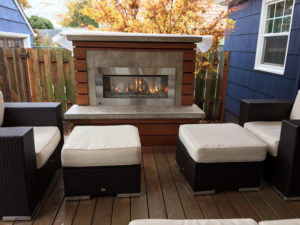 Keeping your landscape healthy requires year-round maintenance that varies from season to season: planting is usually done in spring, weeding and watering takes place in summer, and in autumn, we harvest. Fall is also the perfect time to winterize your landscape so it’s ready for the colder, wetter months ahead.
Keeping your landscape healthy requires year-round maintenance that varies from season to season: planting is usually done in spring, weeding and watering takes place in summer, and in autumn, we harvest. Fall is also the perfect time to winterize your landscape so it’s ready for the colder, wetter months ahead.
Most of the Pacific Northwest is spared from extremely harsh winters, but if you want to keep your landscape healthy it needs to be protected. Portland landscaping experts recommend you take the following important steps before the winter season.
Prepare your Lawn
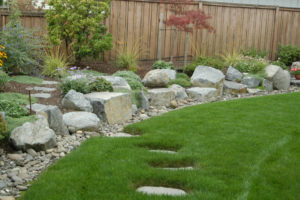 Landscaping maintenance pros recommend applying fertilizer in the fall. Indeed, winter fertilization with Northwest grass varieties is one of the most important of the year. The roots will absorb and store the nutrients from the fertilizer so that they will be available in the spring for a good healthy push. October through mid-November is the best window before the freezing weather. Once the ground is frozen, you won’t want to fertilize again until spring. Make sure to select a fertilizer that has a lower nitrogen content and a higher potassium content than what you utilize during the summer months.
Landscaping maintenance pros recommend applying fertilizer in the fall. Indeed, winter fertilization with Northwest grass varieties is one of the most important of the year. The roots will absorb and store the nutrients from the fertilizer so that they will be available in the spring for a good healthy push. October through mid-November is the best window before the freezing weather. Once the ground is frozen, you won’t want to fertilize again until spring. Make sure to select a fertilizer that has a lower nitrogen content and a higher potassium content than what you utilize during the summer months.
Keep your lawn mowed to about 1.5 inches throughout the fall and winter months. (Here in Portland, landscaping maintenance often involves waiting for your lawn to dry out so you can actually cut it.) The lower height of the lawn allows moisture to escape and prevents many of the common lawn diseases associated with excessive moisture.
Finally, rake leaves and other debris from your lawn to prevent mold from settling in during the wet Portland winter and causing damage to your lawn.
Care for Plants that Never Go Dormant
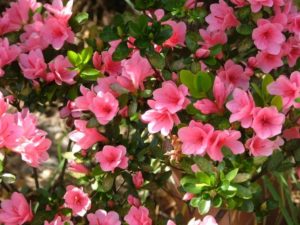 Azaleas, hollies and other popular Northwest plants stay green throughout the winter; they keep photosynthesizing sunlight into energy throughout the year. For this type of plant, continue basic landscaping maintenance such as trimming back branches that are growing across each other and ensuring that each specimen is getting enough water (not a terribly common problem when landscaping Portland, Oregon yards). If you see insect infestations on plants that grow year-round, try spraying them with horticultural oil rather than using toxic pesticides. If you are unsure as to the cause of the disease or infestation, contact your local garden center or landscape contractor to assist in identifying an appropriate product.
Azaleas, hollies and other popular Northwest plants stay green throughout the winter; they keep photosynthesizing sunlight into energy throughout the year. For this type of plant, continue basic landscaping maintenance such as trimming back branches that are growing across each other and ensuring that each specimen is getting enough water (not a terribly common problem when landscaping Portland, Oregon yards). If you see insect infestations on plants that grow year-round, try spraying them with horticultural oil rather than using toxic pesticides. If you are unsure as to the cause of the disease or infestation, contact your local garden center or landscape contractor to assist in identifying an appropriate product.
Test and Amend Soil
Fall is a good time to assess whether your soil needs amendment. You can take your soil sample to a nearby university or nursery to have it tested. When it comes to landscaping, Portland, Oregon soils are often riddled with clay, which limits drainage and can drown some species. Once you have your soil test results you will better understand how to add compost or other natural solutions to improve soil quality.
Deadhead Old Blooms
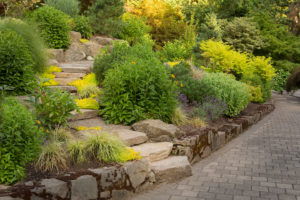 Oh, how we love our hydrangeas! We’re lucky to have such gorgeous plants as part of our Portland landscaping. Maintenance for these and other flowering plants involves deadheading flowers once they’re done blooming. Avoid over-pruning flowering plants and shrubs; in many cases, all you need to do is remove the remnants of flowers. There are many online resources available to assist you in proper care of your plants.
Oh, how we love our hydrangeas! We’re lucky to have such gorgeous plants as part of our Portland landscaping. Maintenance for these and other flowering plants involves deadheading flowers once they’re done blooming. Avoid over-pruning flowering plants and shrubs; in many cases, all you need to do is remove the remnants of flowers. There are many online resources available to assist you in proper care of your plants.
Prune With Care
Portland landscaping maintenance professionals wince when they see victims of over-pruning. Too often, homeowners and landscaping workers simply shear plants with electrical clippers, with no understanding about how such extreme pruning affects the flow of nutrients and energy to the plant.
Avoid hacking away willy-nilly. Wait until herbaceous perennials turn brown before gently pruning to remove any crossed branches and open up space at the heart of the plant. Some plants have special pruning rules, so it makes sense to consult with a Portland landscaping maintenance expert when you’re not sure how to care for a certain species. Excessive shearing of plants in the fall can remove the flower buds that would otherwise create beautiful blooms in the spring.
Mulch
Once you’ve cleaned your beds, deadheaded and pruned, it’s time to mulch. Basically, mulch is a layer of organic material that protects the bare soil between plants. You can think of mulch as a layer of insulation for the soil – it evens out soil temperatures during the winter. Additionally, it minimizes weed growth and makes it easier to pull weeds when they do appear. Finally, mulch adds a layer of nutrient-rich humus, making the top layer of soil airy and light.
When landscaping Portland, Oregon yards, it’s smart for homeowners to save dry leaves, grass clippings and other natural detritus to serve as mulch. Alternatively, you can purchase mulch from landscape supply companies and local compost and mulch suppliers.
Winterize Irrigation Systems
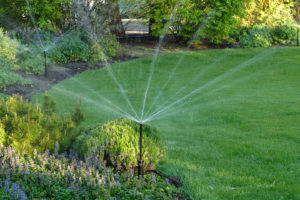 Beyond preparing flora for winter, you’ll also need to prepare your irrigation system for colder temperatures. When temperatures drop below freezing, any water left in a sprinkler or irrigation system will expand. This can cause major damage and lead to costly repairs. It is much more affordable to call in a Portland landscaping maintenance crew to “blow out” your irrigation system, thereby removing all lingering water.
Beyond preparing flora for winter, you’ll also need to prepare your irrigation system for colder temperatures. When temperatures drop below freezing, any water left in a sprinkler or irrigation system will expand. This can cause major damage and lead to costly repairs. It is much more affordable to call in a Portland landscaping maintenance crew to “blow out” your irrigation system, thereby removing all lingering water.
Take care of your landscape by making these important winterization techniques a part of your fall to-do list and you’ll be rewarded with an explosion of new growth and beautiful blossoms in the spring.
